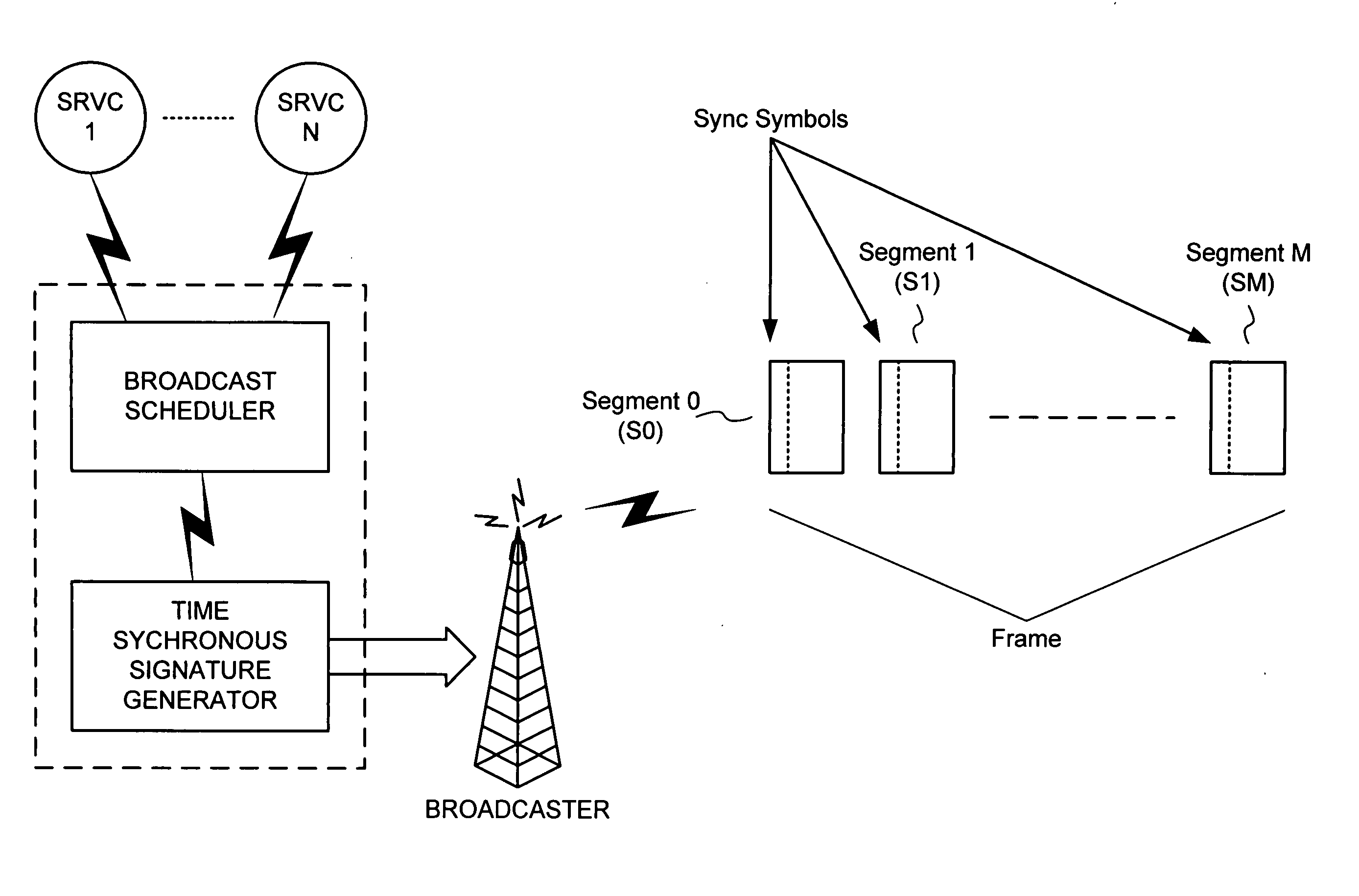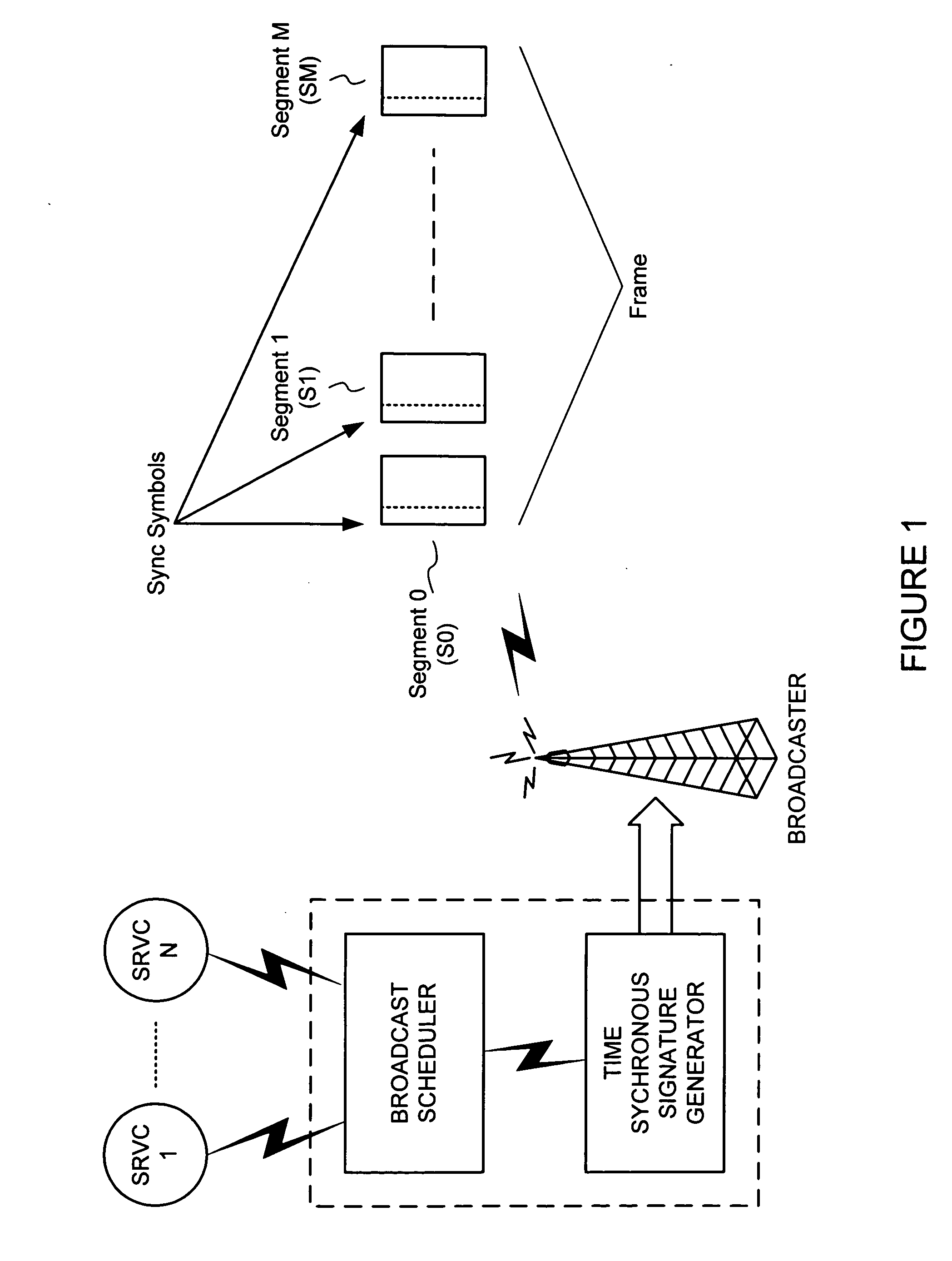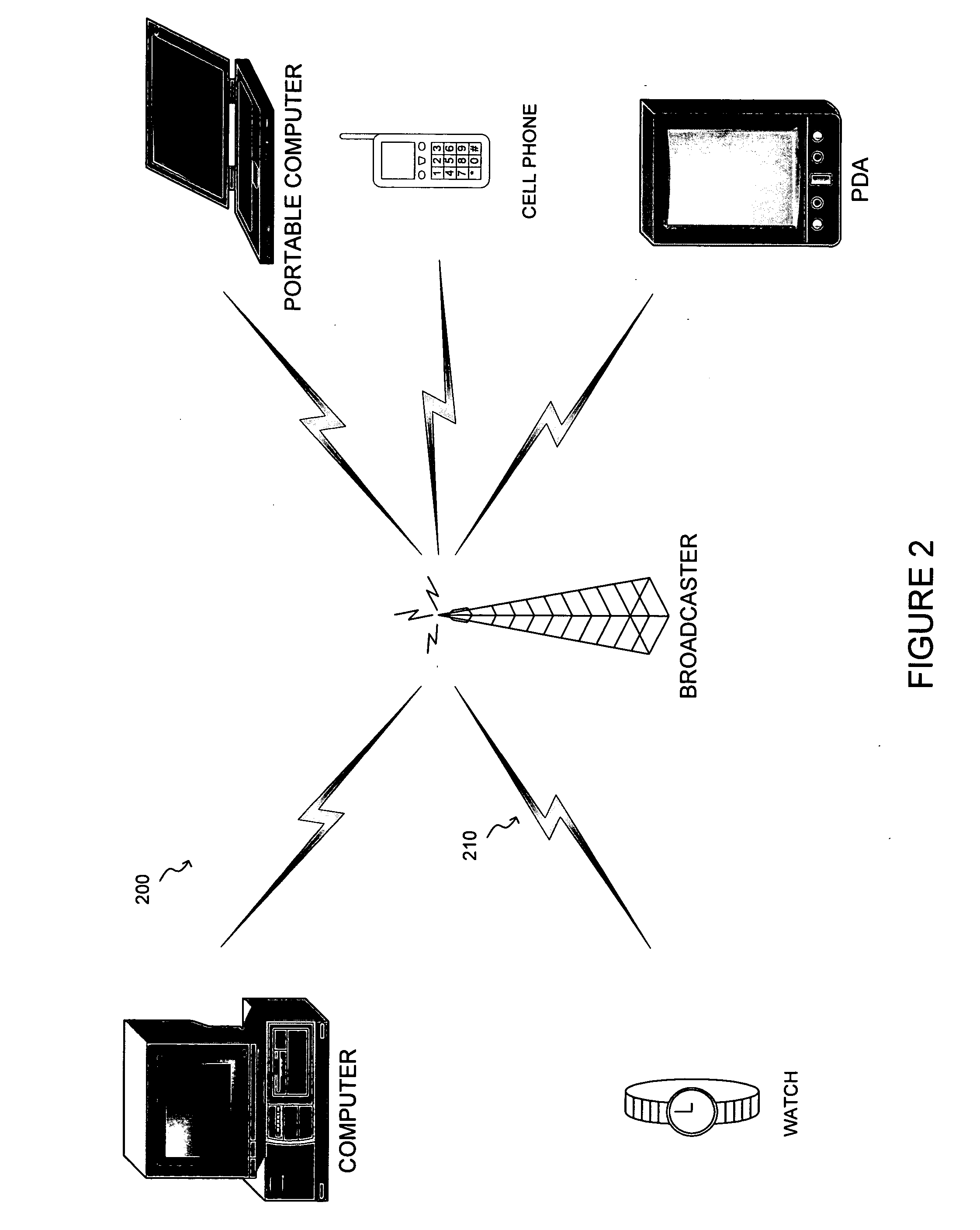Cheap signatures for synchronous broadcast communication
- Summary
- Abstract
- Description
- Claims
- Application Information
AI Technical Summary
Benefits of technology
Problems solved by technology
Method used
Image
Examples
example frame header signatures
[0052]FIG. 8 is a diagram illustrating example frames including provisions for encryption. Each frame includes a frame header that includes data fields, an HMAC value, and an HMAC key. The data fields are signed using the HMAC function and the HMAC key. In one example sequence, 1000 frames (0-999) are transmitted in sequence. Frame 998 includes a HMAC key corresponding to h998, while frame 999 includes an HMAC key that corresponds to h999. Hash key h999 is verified by hashing it and ensuring the result matches hash key h998.
[0053] Since the HMAC key is received further along in the time line for transmission than the HMAC value, the late arrival of the HMAC key is not very helpful since the remainder of the transmission is gone. The window of opportunity for a replay attack is very small if it exists at all, since the client device can use its own internal clock and information from the last received frame to close the window between that last frame and the next one expected.
[0054...
example signing
Procedure
[0055] A sender generates a secret value (Sn) that is used for a number of transmitted frames, corresponding to n. The sender then computes a sequence of hashes using the secret key (Sn) as an initial seed and hashing functions f, Sn−1=f(Sn), Sn−2=f(Sn−1) . . . , S1=f(S2), S0=f(S1). For each frame (F) and sequence (i), the sender computes Hi=HMAC(Fi, Si). The signed frame is transmitted by the broadcaster (see previous discussion) starting with {n, S0=fn(Sn)}Ks, and ending with the secret Si=f(n−i)(Sn). A new secret key (Sn) is generated after the transmission sequence is complete when i=n.
[0056]FIG. 9 is a diagram of process flow (900) for a broadcast server that is configured to sign data according to an aspect of the present invention. Processing begins at block 901, and proceeds to block 910. At block 910, the secret key Sn is retrieved from a storage location such as memory. At block 920, the initial value S0 is computed (see previous discussion for details). Continui...
example verification
Procedure
[0058] A recipient receives a first frame in a transmission sequence. Upon reception, the recipient verifies the RSA signature (K_RSA or Kr) and stores HMAC key S0. As described previously above, each received frame is signed, where the transmission began with {n, S0=fn(Sn)}Ks, and ended with the secret Si=fn−i)(Sn). For each received frame (F) in sequence number i, the sender determines if the received HMAC key, Si, is verified as satisfying Si=f(n−i)(Sn) (or, if the previous frame was verified, the equivalent but faster test Si=f(Si−1)). When Si is determined to be valid, the recipient verifies the HMAC value by checking if Hi=HMAC(Fi, Si). The recipient accepts frame Fi as authentic when HMAC value Hi is valid.
[0059]FIG. 10 is a diagram of process flow for broadcast receiver that is configured to receive signed data according to an aspect of the present invention. Processing begins at block 1001, and proceeds to block 1010. At block 1010, the RSA signed datum {n, S0} is...
PUM
 Login to View More
Login to View More Abstract
Description
Claims
Application Information
 Login to View More
Login to View More - R&D
- Intellectual Property
- Life Sciences
- Materials
- Tech Scout
- Unparalleled Data Quality
- Higher Quality Content
- 60% Fewer Hallucinations
Browse by: Latest US Patents, China's latest patents, Technical Efficacy Thesaurus, Application Domain, Technology Topic, Popular Technical Reports.
© 2025 PatSnap. All rights reserved.Legal|Privacy policy|Modern Slavery Act Transparency Statement|Sitemap|About US| Contact US: help@patsnap.com



